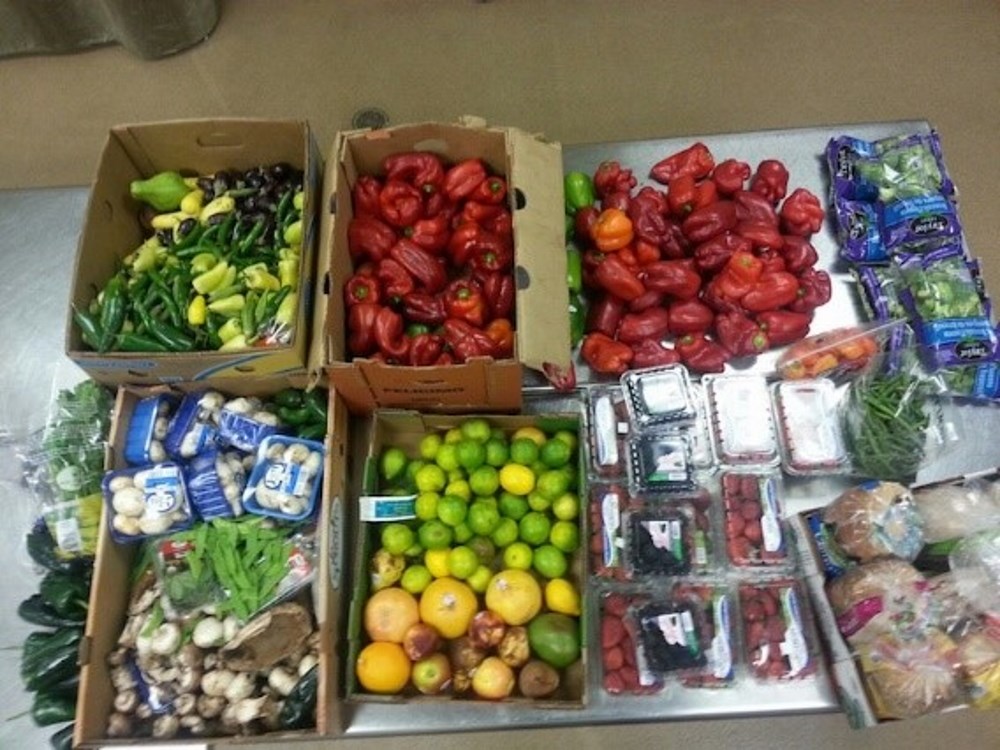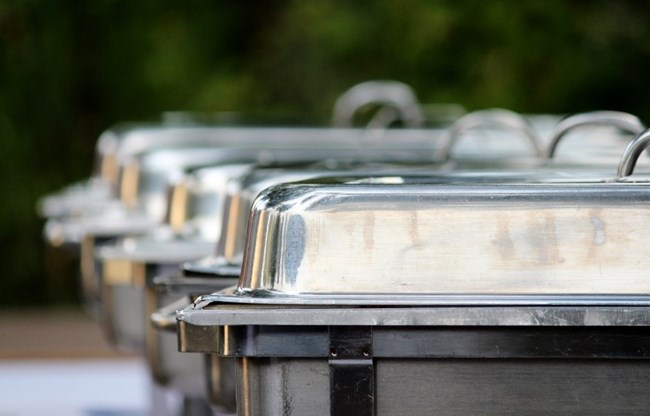Last updated: August 11, 2021
Article
Food Waste - Part 2

Reducing food waste comes in many stages and requires changing your habits and practices. Several ideas for source reduction, such as repurposing food and conducting waste audits, were discussed in Part 1. Part 2 will provide ideas for reducing waste at the customer level.
It is often difficult to determine how much food is needed for a particular event. There are various food calculators available to help determine the correct amount of food for a number of guests; however, finding ways to present and distribute that food can prove just as important and effective in preventing waste. Some of these practices include Just-in-Time serving, using different products for serving, and coming up with creative ways to help guests only take what they can truly eat.
Just-In-Time Serving
Just-in-Time (JIT) serving is a management strategy that focuses on producing goods on an as-needed basis. Instead of producing goods in advance based on anticipated demand, the technique waits for demand to trigger production to help cut waste and minimize excess production. This technique has become more common in the food industry as a method for reducing food waste - by waiting for the customer to place the order, the Just-in-Time method ensures food is not being overproduced.

Presentation Matters
With buffets and catering, JIT serving may not be practical. However, some new technologies and products have come into the market recently to help reduce food waste in these situations.
We have all been to an event and seen half-empty catering trays or a buffet where the food is pushed to the back of the trays and looks dry and unappetizing as though it had been sitting there for hours. Preventing food waste at large events is just as much about presenting the food in a way to be as appetizing as possible, as it is about ensuring just the right amount of food is prepared.
There has been a recent demand in the industry for smaller chafing dishes and food pans. The shift to smaller serving containers not only significantly reduces food waste but also:
-
Saves money,
-
Improves freshness, and
-
Improves the overall presentation.
Caterers have traditionally used full-size pans for serving entrees. This practice, however, generally results in up to half of the food being wasted. Guests tend to take food from the fullest pans, and by the time the full-size pans are only half-empty, they already look less appealing to guests. By using smaller pans and replacing them more frequently, the pans look fresher and fuller longer, and they are better able to hold in the moisture to prevent the food from drying out. Some caterers will create an optical illusion of sorts by putting out the same amount of food as a full-size pan but splitting it into 2 or 3 smaller dishes which allows for the offerings to look full longer and results in less overall waste.

Reducing plate waste
Performing a waste audit specifically for plate waste can help you understand what kinds of items and how much food is being left behind. Having this knowledge can help determine best methods and ideas for reducing the amount of overall plate waste. For example, when Six Bells pub performed a food waste review, they found that a lot of salad was being left behind. The chef decided to use curlier salad greens which created the same volume on the plate but used less greens. This small change resulted in less overall plate waste while reducing disposal costs and salad costs. Over the past several years, research has been done on different methods and techniques for creating less food waste at the customer level. The techniques below have shown positive results in plate waste reduction.
-
Reduce plate sizes and add signage – In a 2013 study, researchers Kallbekken and Saelens found that reducing plate sizes from 24cm to 21cm in combination with signage reminding customers they can help themselves more than once resulted in a 20% reduction in wasted food.
-
Go Trayless – Bon Appetit Management Company was one of the participants of the 2019 Sustainability Roundtable discussed in Part 1. They discovered that removing trays at buffet lines saves an average of 3 to 5 ounces of waste per guest per meal.
-
Use smaller serving utensils – Using smaller serving utensils encourages guests to take smaller portion sizes.
-
Offer different portion sizes – In a 2013 research study done by WRAP, the main reason people gave for leaving food on their plates was that portion sizes were too big. In fact, the study found that 44% of people felt large portions of food were “off-putting.” Usually, menus are broken down into two sizes, child and adult sizes. However, child portions often only serve kids up to twelve years old, even though children of different ages eat significantly different amounts. Offering toddler portions in addition to older kid portions could help reduce the amount of waste left behind by kids. Additionally, seniors tend to eat less, but do not want to order off a children’s menu due to the often-limited choices. Offering different sizes (small, medium, large, half-plates, etc.) will allow guests to determine how much food they want to eat.
-
Offer top-offs of vegetables or other sides – The 2013 WRAP research study also found that sides or “extras” tend to go to waste more often than main dishes because people consider these to be plate fillers. Starting with smaller portion sizes of these items and offering top-offs allows guests to determine how much they can or want to eat resulting in overall reduced plate waste.
-
Tasting Spoons – Offering tasting spoons or samples was discussed at the Cornell Sustainability Conference. The attendees determined that this method could result in reduced food waste.
Finding ways to effectively reduce plate waste means changing habits for concessioners, chefs, and guests alike. Performing a plate waste audit can help make changing those habits easier to adopt, as determining best methods for food waste reduction based on audit results can greatly reduce the amount of food diverted to landfills. Keep in mind that these are just a few of the ideas and options that are available to reduce plate waste. By knowing your business, the habits of your guests, and using a bit of creativity you can determine what methods work best for your business.
Food to Humans
After source reduction in the EPA Food Recovery Hierarchy, the next best way to divert waste is to “Feed Hungry People.” While there are challenges associated with donating leftover and unused food for human consumption, especially for NPS concessioners, donating this excess food to those in need has become easier than in the past. The Bill Emerson Good Samaritan Food Donation Act, signed into law in 1996, was created to encourage food donation by minimizing liability. In 2008, the Federal Food Donation Act expanded on this legislation by encouraging federal agencies to donate excess food. These Acts protect those who donate excess food from most liability claims as long as the food meets quality and labeling standards imposed by federal, state, and local laws.
Locally, many places like food banks will pick up leftover food from events or service companies and redistribute it. On a national level, Food Donation Connection is an organization that works in partnership with the National Restaurant Association to help manage food donation programs for companies interested in donating food. In addition to helping those in need and reducing food waste, donating allows for tax savings by reducing the after-tax cost of surplus food.
What is Next?
Finding ways to reduce catering, buffet, and plate waste takes creativity and changing habits, but it can be done. Performing waste audits can assist in finding creative and effective ways to reduce this waste. Food waste that is still edible and sanitary for human consumption can be diverted to those in need in some cases, but inevitably, there will still be some waste left over. The next article will discuss ways to keep this waste from ending up in landfills by diverting food scraps to animals, composting, and using digesters to recover energy.
